Adams’ contributions set the path for the national women’s rights movement almost half a century later, when approximately 300 people gathered in July 1848, for the Seneca Falls Convention. Female suffragists convened to discuss the lack of social, civic, and religious rights for women before finally deciding to focus on securing the vote for women.
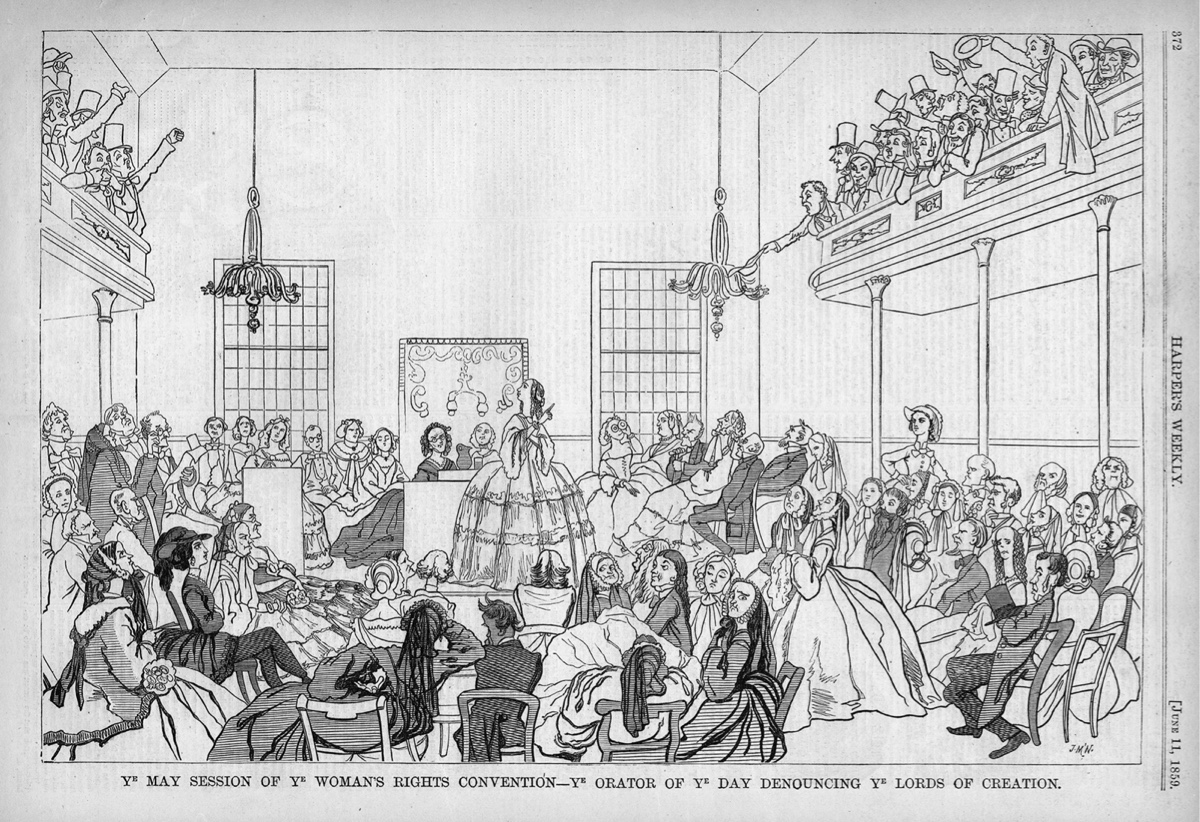
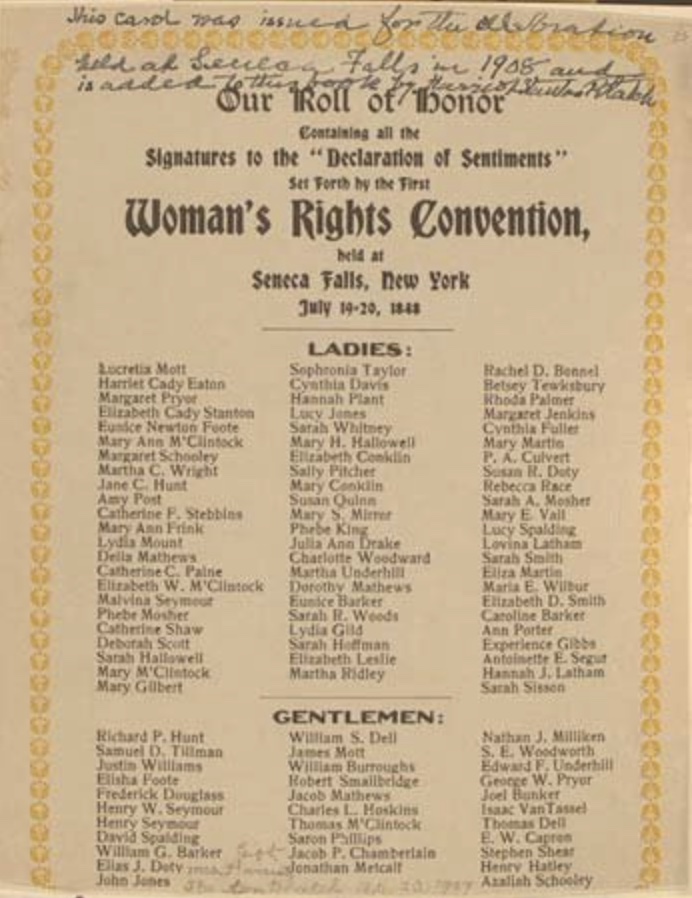
No words could express our astonishment on finding, a few days afterward, that what seemed to us so timely, so rational, and so sacred, should be a subject for sarcasm and ridicule....
The women folks have just held a Convention up in New York State, and passed a sort of “bill of rights” . . . . They should have resolved at the same time, that it was obligatory . . . upon the “lords” . . . to wash dishes, scour up, be put to the tub, handle the broom, darn stockings, patch breeches, scold the servants, dress in the latest fashion, wear trinkets, look beautiful, and be as fascinating as those blessed morsels of humanity whom God gave to preserve that rough animal man, in something like a reasonable civilization .
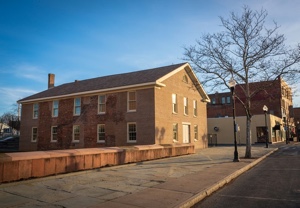
This is all wrong . . . . Society would have to be radically remodeled in order to accommodate itself to so great a change .
Suffragist leaders, however, disagreed on the methods used to acquire this right and eventually settled on a Declaration of Sentiments based on the Declaration of Independence. Although this call to female enfranchisement was ridiculed by the public, several activists responded in support. The issue of women’s rights would finally have to be addressed.
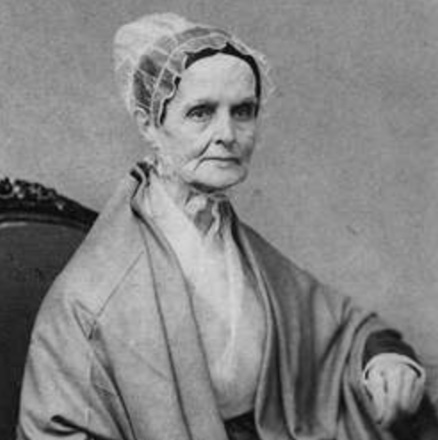
He has denied her the facilities for obtaning a thorough education-all colleges closed against her.
He has monopolized nearly all the profitable employments, and from those she is permitted to follow, he recieves but a scanty remuneration.
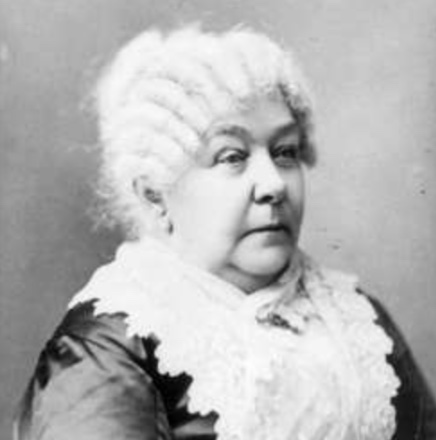
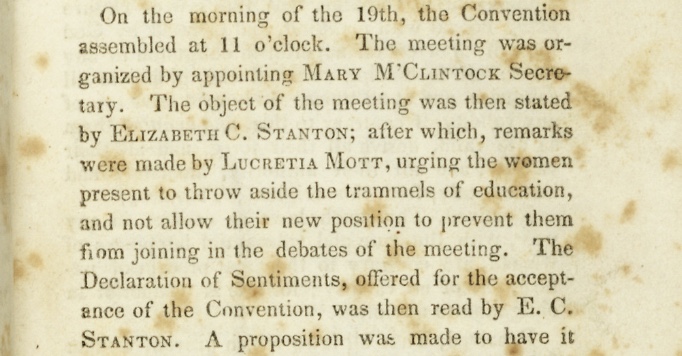
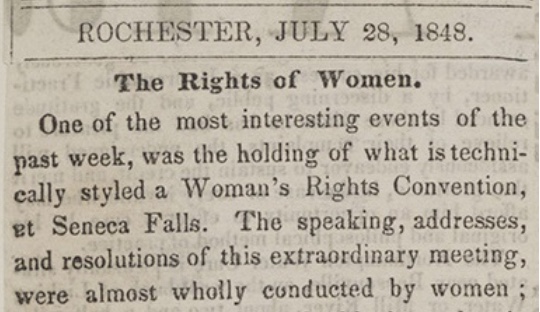
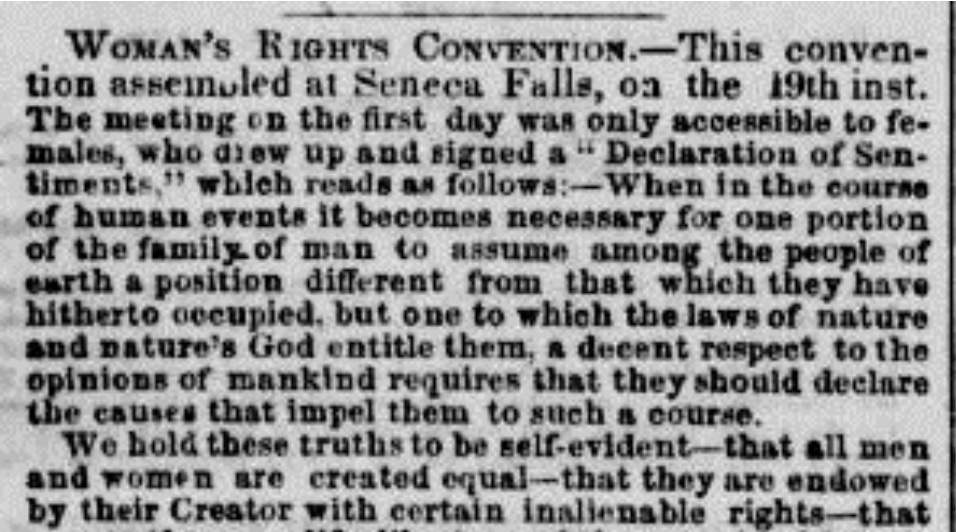
Woman’s Rights Convention, The New York Herald, July 30, 1848, p. 3. Library of Congress. (Hover to expand)